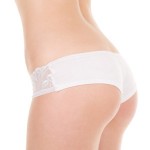 Cellulite is the appearance of small pockets of fat on the thighs, abdomen, and buttocks of 90 percent of post-adolescent women. This uneven dimpling makes is a cause of distress for many and can occur in women of all sizes and shapes.
Cellulite is the appearance of small pockets of fat on the thighs, abdomen, and buttocks of 90 percent of post-adolescent women. This uneven dimpling makes is a cause of distress for many and can occur in women of all sizes and shapes.
The Hormonal Connection
Cellulite tends to develop mainly in women undergoing a hormonal change. Puberty, pregnancy, and menopause are all examples of this. Hormones control lymphatic tissue, blood flow, fat storage and connective tissue buildup, all of which are factors of cellulite. Many different changes may happen to the fat layer over time, which can result in cellulite. And, as time passes, its appearance may worsen. A healthy lifestyle may help ease this problem and other treatments are available as well.
Treatments for cellulite focus on its appearance, not its elimination. Also, cellulite can continue to develop throughout out lifetimes, so no treatment can truly get rid of it. However, the appearance of cellulite can be improved by promoting drainage of the lymph nodes, tightening the skin, and enhancing skin tone. A holistic approach is the best way to treat this unsightly problem.
Popular Cellulite Treatments
Endermologie is a treatment that is FDA approved for cellulite reduction. Endermologie uses a set of rollers and regulated suction to massage away the cellulite. The massage stimulates blood flow and connective tissue growth, thus eliminating the cellulite. This procedure is non-invasive and non-surgical. It can also be used for skin toning.
OptiLipo is another treatment that involves small injections directly into the cellulite in order to dissolve it. The body then eliminates the fat with other waste. OptiLipo can be used on any section of the body that contains cellulite or smaller fat deposits, such as double chins or love handles.
Ultralipo is another advanced treatment for cellulite. It combines Transdermal Acoustic Therapy (TAT) and mesotherapy. The TAT treatment uses sonic waves to break up the collagen and releases the skin, smoothing out the texture. The mesotherapy then breaks down the fat tissue so that the body can rid itself of it. Patients may begin to see results soon after their last treatment, which can vary depending on the patient.
Massage in and of itself is excellent for increasing circulation and draining the lymph nodes. It can also relieve muscles spasms and gets rid of tissue buildup. Body wraps can cause temporary fluid loss due to compression and massage. They may use materials such as aloe, seaweed or mud. Unfortunately, massages alone will not decrease cellulite.
Electric muscle stimulators such as TENS units have occasionally been used to treat cellulite. The stimulators use a direct current to break up scar tissue below the skin, as well as fat cells and fluid pockets. Patients should be aware, however, that the FDA does not consider this type of treatment effective for cellulite.
Liposuction has been used to treat fat deposits and cellulite, but the focus is on fat areas, not the cellulite itself. Often, this distinction can be lost. In fact, when a great deal of fat is removed from an area that also contains cellulite it can make the cellulite look worse than it did prior to surgery.
Alpha-hydroxy acids and other creams and gels can help hasten the exfoliation process, which can help with new, tight skin growth. These are also not FDA approved for cellulite removal.
Losing weight can help shrink the size of fat cells, which will get rid of dimples. While diet and exercise can help reduce cellulite’s appearance, they can never eliminate it completely. It can, however, make other treatments more effective.